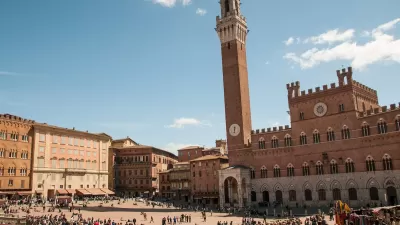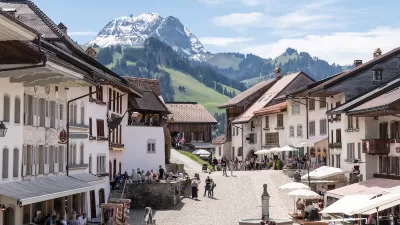In 2008 and 2018, I wrote some much-read blogs about how to get into planning school. As deadlines near, I revisit that advice. I look first at the big picture of the case you need to make for the admissions committee and then the logistics.

In 2008 and 2018, I wrote some much-read blogs about how to get into planning school. In them, I exposed the nuts and bolts of the process. As deadlines near for this year's northern hemisphere round of applications, I revisit that advice. I look first at the big picture of the case you need to make for the admissions committee and then the logistics.
Admissions committees, generally composed of planning faculty who are experts in the field, look to see if you are prepared for graduate school. Among many factors, four characteristics of your file may be less evident to applicants. These include:
- You know what planning is. Planning is a complicated field that can be hard to understand and explain. However, you need to show the committee that you know something about what you are getting into. Students who don't understand the field, at least broadly, may be less happy and drop out. Their slot, particularly their financial aid, may have been better used by someone else.
- You fit well with what the program can offer. Excellent planning programs come in different flavors. Some are more focused, and others are more flexible. They have various kinds of class formats, different concentrations, and different local contexts. Admissions committees want to ensure you can make the most of their program, have enough background knowledge, and won't be longing for something they don't offer.
- You want to learn. This statement may seem obvious but some people apply to graduate school to get a credential for what they think that they already know. That makes it hard for faculty to see what value we might add. As I wrote in 2018, those who write a statement of purpose "as if they are applying for a job make it difficult for readers to see how they might flourish in graduate school."
- You can help your classmates learn. While faculty expertise is essential, what you bring to the classroom is also key. This need for strong student backgrounds is why many programs favor students with work and activist experience relevant to planning. Such experience will help you have better questions, and your cohort will collectively have much to learn from each other.
To make this assessment, the faculty use the elements I examined in the 2008 and 2018 overviews as well as in a series of related blogs. These include a statement of purpose, a comprehensive resume, letters of reference, and transcripts. In the post-COVID era, many programs have dropped GREs. For some schools, however, these are coming back in part to give one more place for students to shine. Other schools have added more personal statements about what you can contribute to their program.
You can expect there will be some shifting over time due to AI. Programs may start to interview students. The potential for AI-generated applications may be another reason to use GREs. There may be more checking of letter writers or new ways of obtaining references.
One's planning education lasts a lifetime, but graduate school can be an important step. As I wrote in 2018, "Do your research, apply to enough schools to have choices, and see what happens."

Maui's Vacation Rental Debate Turns Ugly
Verbal attacks, misinformation campaigns and fistfights plague a high-stakes debate to convert thousands of vacation rentals into long-term housing.

Planetizen Federal Action Tracker
A weekly monitor of how Trump’s orders and actions are impacting planners and planning in America.

Chicago’s Ghost Rails
Just beneath the surface of the modern city lie the remnants of its expansive early 20th-century streetcar system.

Bend, Oregon Zoning Reforms Prioritize Small-Scale Housing
The city altered its zoning code to allow multi-family housing and eliminated parking mandates citywide.

Amtrak Cutting Jobs, Funding to High-Speed Rail
The agency plans to cut 10 percent of its workforce and has confirmed it will not fund new high-speed rail projects.

LA Denies Basic Services to Unhoused Residents
The city has repeatedly failed to respond to requests for trash pickup at encampment sites, and eliminated a program that provided mobile showers and toilets.
Urban Design for Planners 1: Software Tools
This six-course series explores essential urban design concepts using open source software and equips planners with the tools they need to participate fully in the urban design process.
Planning for Universal Design
Learn the tools for implementing Universal Design in planning regulations.
planning NEXT
Appalachian Highlands Housing Partners
Mpact (founded as Rail~Volution)
City of Camden Redevelopment Agency
City of Astoria
City of Portland
City of Laramie






























